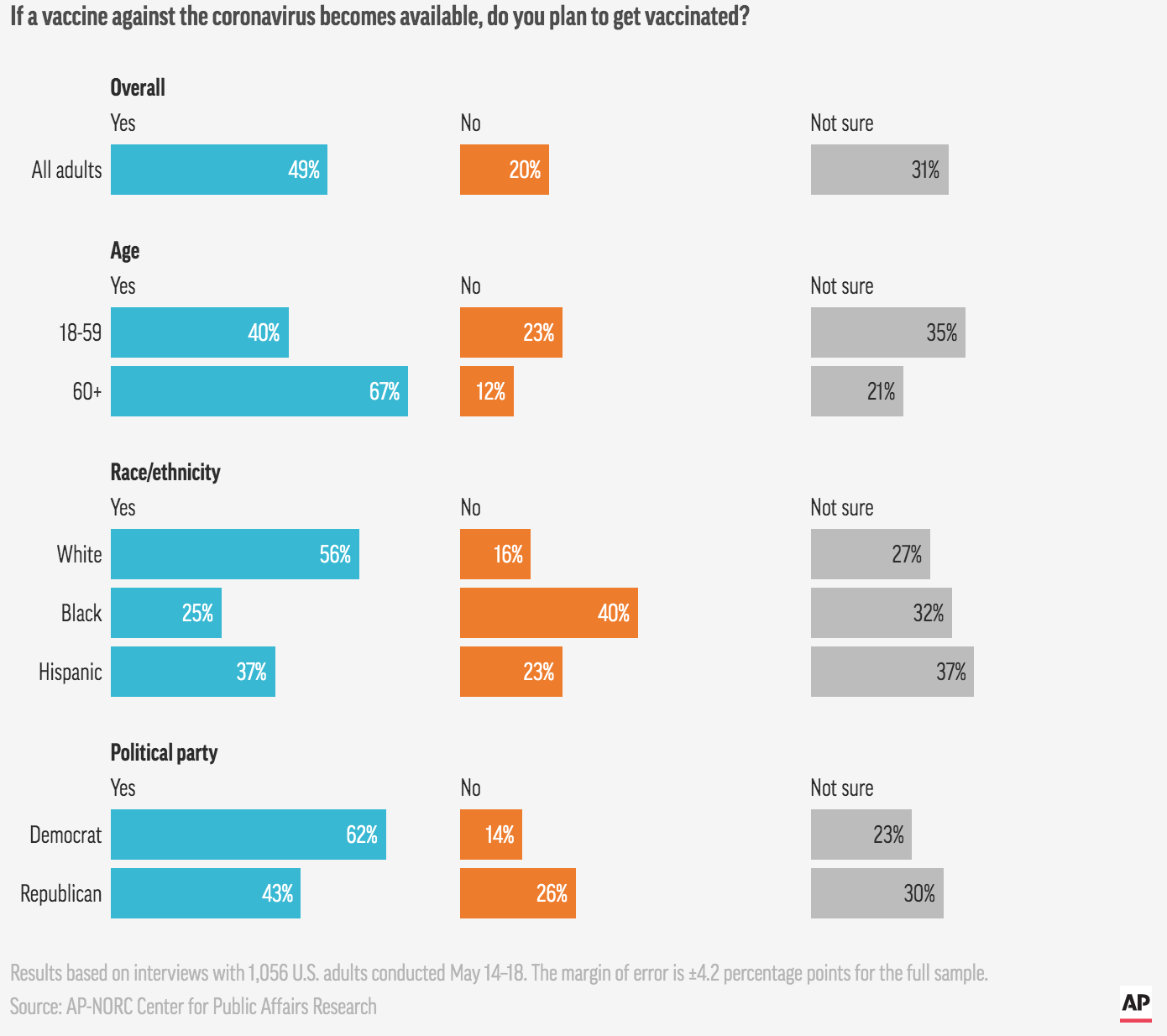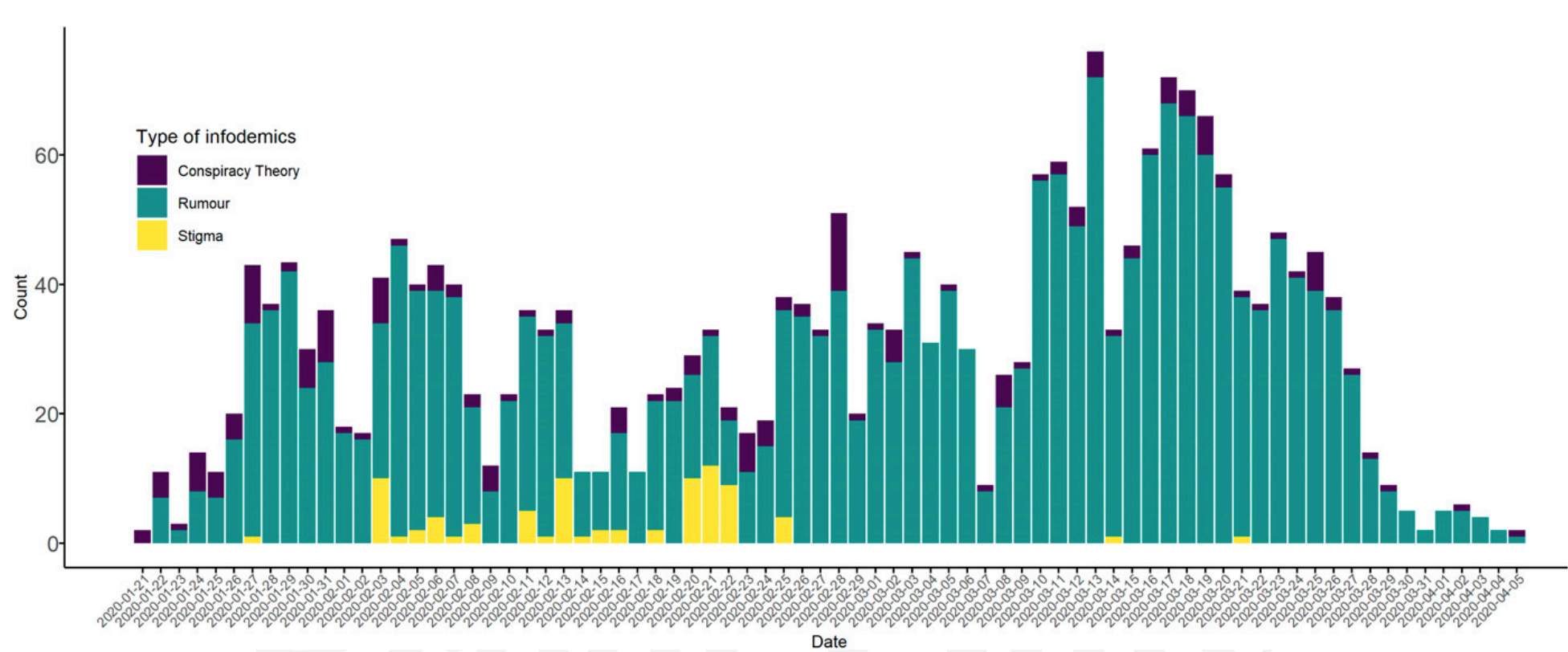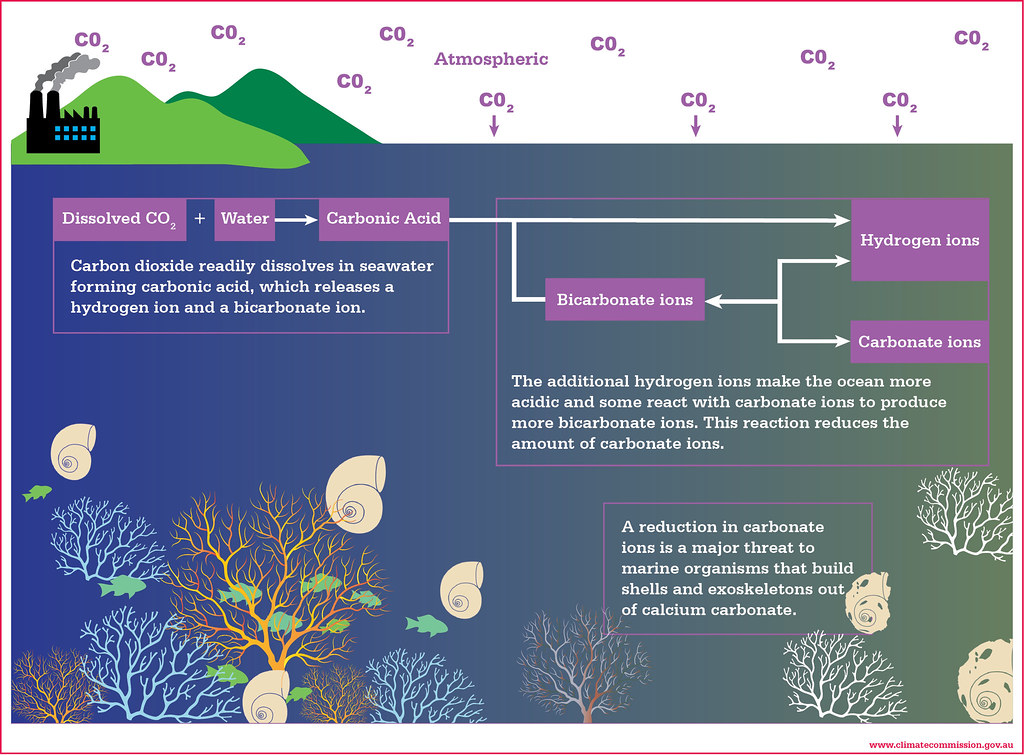Right now communicating science to the general public is more important than ever, and we are failing. With less than 50% of Americans saying they would receive a vaccine for COVID-19 if it were approved today shows the eroding trust that the public has for their once highly esteemed scientist.

Where did we go wrong? Perhaps we can trace this back to the article published in 1998 by the Lancet linking autism and vaccines. However, in the January before COVID-19 a poll found that only 10% of Americans believed that vaccines caused autism. This cannot explain the nearly 50% of Americans who fear a potential COVID-19 vaccine just 4 months later. I believe the seeds of mistrust were sown during this pandemic. The line of communication between scientist and the public, once pristine, has been scarred by misinformation and rushed conclusions.
Perhaps the most notable slip up was the controversy surrounding masks. While commonplace (and in many cases mandatory) now it was not until April 3rd,3 months into the pandemic, that the CDC began recommending the general public to wear a mask. This was in direct conflict with their earlier statements that only healthcare workers needed masks. The rush of the pandemic has upended the scientific process. Scientist rushed conclusions that could not be properly verified before being shared with the public. The public demanded answers from a process that can take years, in a matter of weeks. By caving in to public demand, the CDC and World Health Organization were inevitably set up for failure as the virus progressed and more data was collected leading to contradicting statements. This trial and error is an important part of the scientific method, but it is rarely shared with the public in real time as viable information. So tweets from the U.S surgeon general like this only serve to fuel distrust when compared with tweets he makes a few months later. I do not fault scientist for changing their opinion as new data becomes available, but I do fault (some) scientist for stating their answers with the same confidence as answers that result from years of work and scrutiny from peers.
As the race to find a vaccine has taken off, so has the search for a treatment. Scientist have been under enormous pressure to find treatments for COVID-19 that can reduce mortality and infection rate. This has created haste in the scientific method and has allowed some treatments to receive emergency authorization from the FDA such as remdesivir. Even these emergency authorizations are accompanied by randomized, double blind, placebo-controlled clinical trials that make sure these treatments are safe. These studies involved hundreds of patients of varying backgrounds and age groups. None of these sound scientific methods for testing were present in the study of Hydroxychloroquine that led to its eventual emergency authorization. The original study that sparked interest in Hydroxychloroquine involved only 32 patients. 26 were treated with Hydroxychloroquine and 16 were not. The researchers concluded that despite their small sample size “our survey shows that hydroxychloroquine treatment is significantly associated with viral load reduction/disappearance in COVID-19“. Despite its merger sample size and lack of randomization, the study was enough to propel Hydroxchloroquine past the normally rigorous FDA approval process. Later studies conducted on Hydroxychloroquine would questions it effectiveness as a treatment for COVID-19 and thus the scientific process was able to correct itself and the FDA revoked the use of Hydroxychloroquine as treatment for COVID-19. However, the damage was done. The public once again lost its trust in doctors. This opened the door to rumours and conspiracy theories to dominate the publics view. Social media has only exacerbated this spread of misinformation. This allowed the spread of a rumour that drinking bleach could cure you of COVID-19 which led to 4% of respondents of a CDC survey saying that they had drunk or gargled bleach.

This graph published by American Journal of Tropical Medicine and Hygiene. shows the number of rumours, conspiracy theories, and stigma surrounding COVID-19 starting from January 21 and continuing until April 5th. We can see a steady increase starting in February and hitting its peak in march. Its worth noting that Hydroxychloroquine was approved in February and began to receive doubt in March from the media and scientist alike for its unproven effectiveness. This coincides with the spike we see in rumours happening in late February and continuing into March. This possible correlation cannot be overlooked as we continue to learn more about how to treat COVID-19. The spread of misinformation can be as damaging to the public as the virus itself.
By allowing leniency in the airtight scientific method, we have opened the flood gates to all types of information being thrust onto the pedestal once reserved for conclusion from the scientific method. Your uncles facebook post about the healing power of Clorox bleach carry as much weight as the cutting edge research on COVID-19. “Todays Propaganda has become tomorrows truth“. Scientist have lost credibility with the public. This is not the first time this has happened, but it may be the most damaging.






